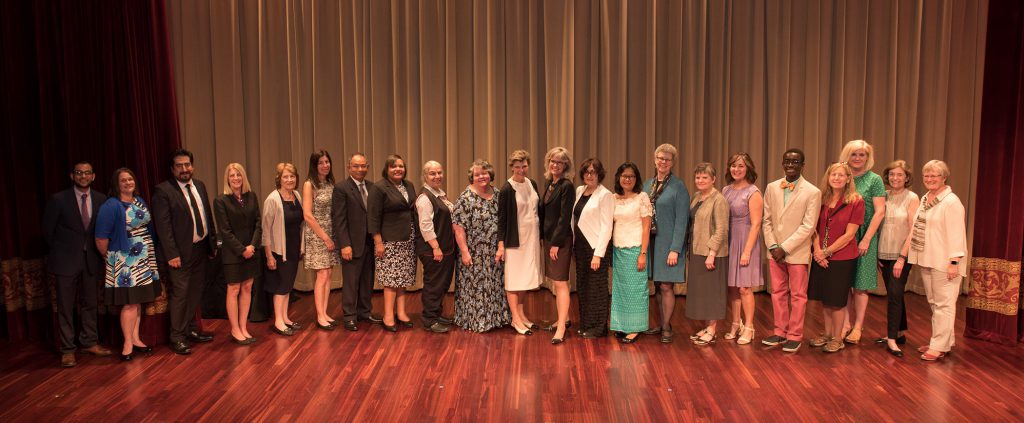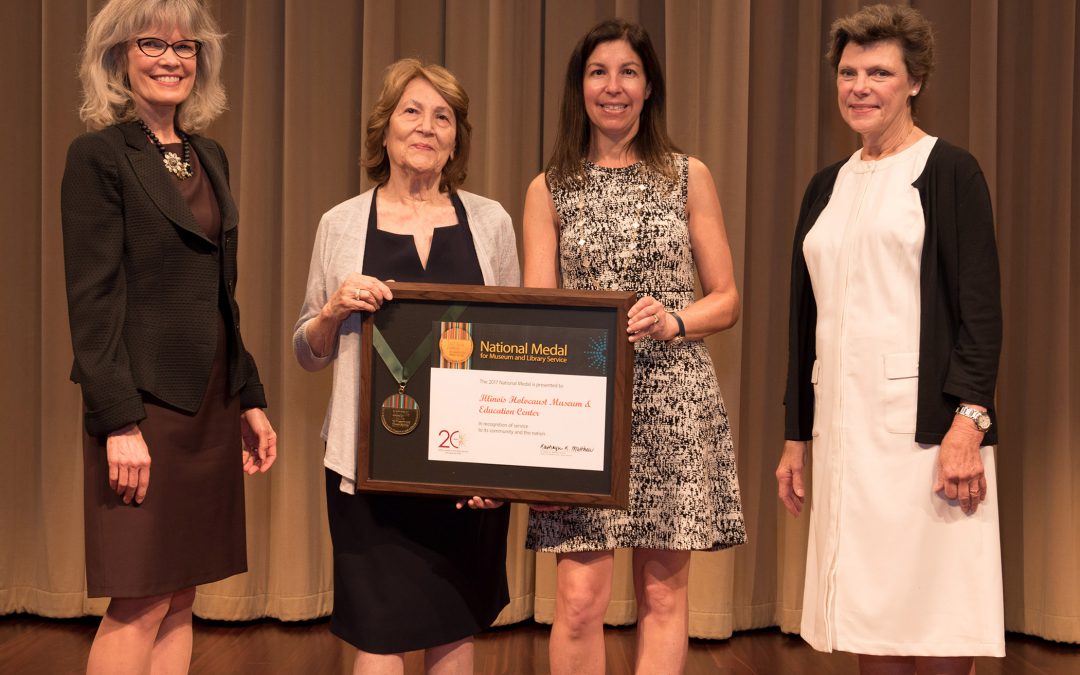WASHINGTON — The Illinois Holocaust Museum and Education Center was honored this week as one of 10 institutions to receive a 2017 national award for service and education from the Institute of Museum and Library Services.
Susan Abrams, the Skokie-based organization’s chief executive, and Fritzie Fritzshall, president of the museum board and a Holocaust survivor, received the award Monday at a ceremony at the National Archives.
The museum is active in the community and state in telling the history of the Holocaust and has been crucial in passing legislation in Illinois that requires the teaching of the Holocaust in Illinois public school. The legislation, passed in 1990, was updated in 2005 to include teaching genocide worldwide.
The Holocaust Memorial Foundation was founded in 1981 and the museum opened in 1984 in small storefront in Skokie, but it now occupies a 65,000 sq. foot building finished in April 2009. It is the third largest Holocaust museum in the world, behind Yad Vashem in Jerusalem and the Holocaust Museum in Washington, D.C. During their peak season, the museum sees 500-800 visitors daily.
Fritzshall, a survivor of Auschwitz, said that the museum had its origin in challenging hatred and intolerance at home. Fritzshall is in her mid to late 80s, but like many Holocaust survivors her exact age is lost as she has no birth certificate. In 1977, she said, Jews and her fellow Holocaust survivors in Skokie reacted with fear and shock when they heard that a neo-Nazi group had planned a march in the city.
“It originally started with a march of Neo-Nazis going into Skokie and at that point, many of the survivors lived in Skokie,” she said in an interview.
Despite legal challenges, the Neo-Nazi group, represented by the ACLU, won the right to march thanks to a Supreme Court decision in the 1977 case titled National Socialist Party of America v. Village of Skokie. However, the march never materialized.
Nevertheless, Fritzshall said, leaders in the Jewish community decided that something had to be done.
“From something horrible, something good happened,” she said. “At that point, the survivors got together and they said, ‘We need to teach.’”
According to Fritzshall, at the time schools had trouble approaching the subject of the Holocaust. So, local survivors took it upon themselves to visit schools, give lessons to teachers and speak to students about what happened to them and to others in the Holocaust. Survivors, including Fritzshall, speak to school groups at the end of their visits to the museum. Fritzshall says it has never been easy.
“There is no way that I can even describe an hour of what it was like suffering in Auschwitz,” Fritzshall said. “There was no green [on] anything. If there had been green, we would have eaten it. We would have eaten the bark off the trees. We would have eaten the grass. We would have eaten the leaves.”

Group photo of 2017 National Medal for Museum and Library Service winners. (Photo courtesy of Gediyon Kifle)
Fritzshall’s mother and two brothers died in the camp. She survived by saying she was older than she was, and it was assumed that she could do heavier work and she was allowed to live. Eventually, she escaped with a friend at Auschwitz during a death march, only to be saved by Russian soldiers who eventually liberated the concentration camp.
Fritzshall recalls hating to see the color yellow, because it reminded her of the yellow Stars of David Jews were obliged to wear in Nazi Germany. Now, she said, yellow reminds her of the school buses that bring hundreds of children to the museum every day.
In recent months, hate crimes have been on the rise, including an incidents of bomb threats to synagogues and toppling of Jewish gravestones. Fritzshall and others at the museum are not frightened by threats.
“I think it’s more important today than ever to have this museum,” she said. “This museum today teaches 400-500 students every single day about tolerance [and] about what happened. … [The students] may be coming from a terrible home. They may have had a bad experience at school … But when they listen to a survivor and they say, ‘After what she went through, or what he went through, if they can handle it, I can go home and have a better day and handle it.”


